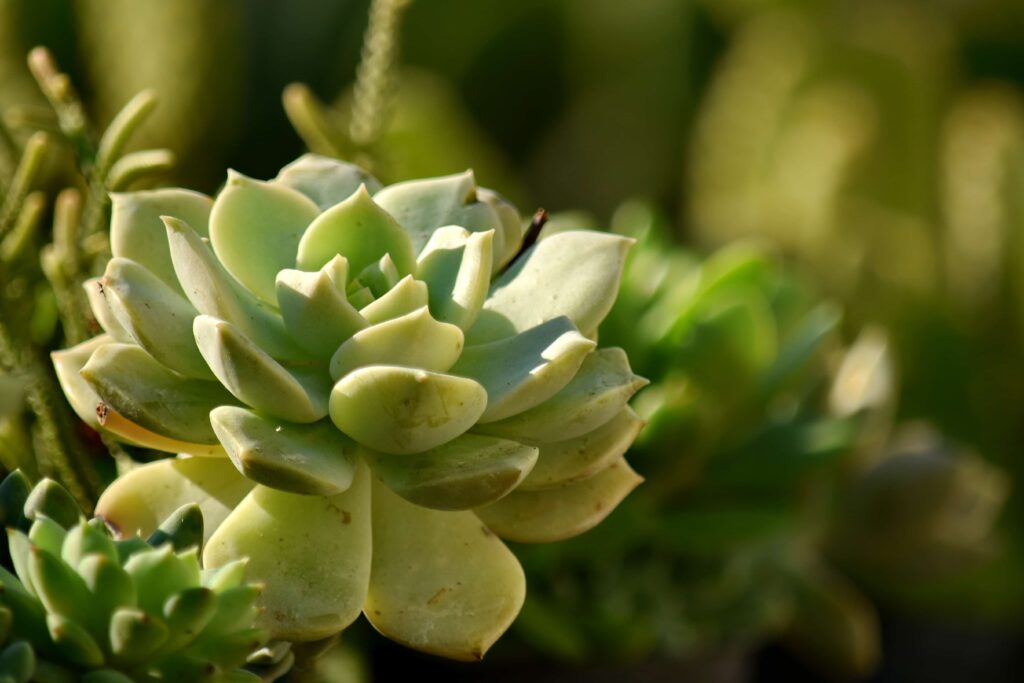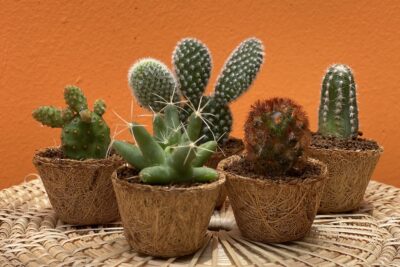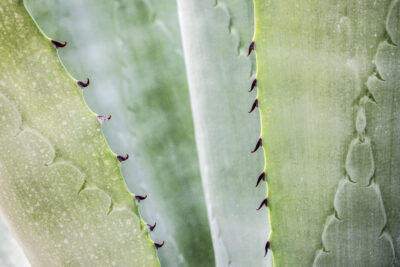
Why Did My Succulent Leaf Fall Off? Causes and Solutions

Succulents are beloved plants known for their fleshy leaves, unique shapes, and vibrant colors. They have gained popularity in recent years as houseplants and garden additions due to their low maintenance requirements and ability to thrive in various environments. However, one common issue that succulent owners often encounter is the sudden dropping of leaves. This can be concerning for plant enthusiasts, especially if they are unsure of the cause.
We will explore the various reasons why succulent leaves fall off and provide solutions to help prevent or address this issue. We will discuss both natural and environmental factors that can cause leaf drop in succulents. Additionally, we will provide tips on how to properly care for your succulents to keep them healthy and minimize the likelihood of leaf loss. Whether you are a seasoned succulent owner or just starting out, understanding the causes and solutions for leaf drop will help you maintain thriving and beautiful succulent plants.
- Lack of water can cause succulent leaves to fall off. Make sure to water your succulent regularly, but be careful not to overwater
- Overwatering can also cause succulent leaves to fall off. Allow the soil to dry out between waterings to prevent root rot
- Insufficient light can cause succulent leaves to fall off. Place your succulent in a location with bright, indirect sunlight
- Excessive heat or cold can cause succulent leaves to fall off. Keep your succulent in a temperature range of 60-80°F (15-26°C)
- Pests, such as mealybugs or scale insects, can cause succulent leaves to fall off. Treat the infestation with an appropriate insecticide
- Transplant shock can cause succulent leaves to fall off. Gradually acclimate your succulent to its new environment when repotting
- Physical damage, such as accidental breakage, can cause succulent leaves to fall off. Handle your succulent with care to avoid damaging the leaves
- Nutrient deficiencies can cause succulent leaves to fall off. Use a balanced fertilizer specifically formulated for succulents
- Disease or infection can cause succulent leaves to fall off. Identify and treat the underlying issue with appropriate fungicides or antibiotics
- Overcrowding can cause succulent leaves to fall off. Give your succulent enough space to grow by repotting into a larger container
- Frequently Asked Questions
Lack of water can cause succulent leaves to fall off. Make sure to water your succulent regularly, but be careful not to overwater
One common reason why succulent leaves fall off is due to a lack of water. Succulents are known for their ability to store water in their leaves, which allows them to survive in arid conditions. However, this doesn't mean they can go without water altogether.
It's essential to water your succulent regularly, especially during the growing season. However, be cautious not to overwater them. Overwatering can lead to root rot, which can cause the leaves to become mushy and eventually fall off.
To prevent overwatering, make sure the soil is completely dry before watering your succulent again. You can check this by inserting your finger into the soil up to your knuckle. If it feels dry, it's time to water. If it's still moist, wait a few more days before watering.
Additionally, it's crucial to provide proper drainage for your succulent. Plant them in well-draining soil and choose a pot with drainage holes to allow excess water to escape. This will help prevent waterlogged roots and keep your succulent healthy.
 Mini Succulent Care: Best Practices for Healthy Growth
Mini Succulent Care: Best Practices for Healthy GrowthAnother potential cause for succulent leaves falling off is underwatering. While succulents are drought-tolerant plants, they still require a certain amount of water to survive. If you're not watering your succulent enough, its leaves may start to wither and drop.
When underwatered, succulents will prioritize water for their core leaves, often sacrificing the outer leaves. This is a survival mechanism to ensure the plant's survival during times of drought. To avoid this, water your succulent thoroughly, allowing the water to soak into the soil. However, ensure the excess water drains out to prevent waterlogging.
Lastly, environmental factors such as temperature and humidity can also contribute to succulent leaf loss. Extreme temperature fluctuations or low humidity levels can cause stress to the plant, leading to leaf drop. Ensure your succulent is kept in a suitable environment with stable temperatures and moderate humidity.
The main causes of succulent leaf loss are lack of water and environmental stress. By providing adequate water, proper drainage, and a suitable environment, you can help prevent your succulent leaves from falling off and keep your plant healthy and thriving.
Overwatering can also cause succulent leaves to fall off. Allow the soil to dry out between waterings to prevent root rot
Overwatering is a common mistake that many succulent owners make, which can ultimately lead to their leaves falling off. It's important to remember that succulents are adapted to survive in arid conditions and have specialized water storage tissues in their leaves and stems. When succulents are overwatered, these tissues become saturated, causing them to swell and eventually burst. This can result in the loss of leaves.
To prevent overwatering and subsequent leaf loss, it is crucial to allow the soil to dry out completely between waterings. Succulents prefer a dry environment, so it's best to water them sparingly. Before watering, always check the moisture level of the soil by inserting your finger about an inch deep into the potting mix. If it feels dry, then it's time to water your succulent. However, if the soil is still damp, hold off on watering until it dries out.
 What Happens to Succulents After They Bloom?
What Happens to Succulents After They Bloom?Additionally, it's essential to ensure that your succulent is planted in a well-draining potting mix. Succulents require a porous soil mixture that allows excess water to drain away quickly. A mixture of cactus soil and perlite or pumice is often recommended. This helps prevent the roots from sitting in overly wet soil, reducing the risk of root rot and leaf loss.
Root rot is another consequence of overwatering that can cause succulent leaves to fall off. When succulent roots are constantly exposed to moisture, they can become waterlogged and begin to rot. As a result, the roots are unable to absorb nutrients effectively, leading to the death of the plant's leaves.
To combat root rot and prevent leaf loss, it's crucial to provide proper drainage for your succulent. Ensure that your pot has drainage holes at the bottom to allow excess water to escape. If your succulent is in a decorative pot without drainage holes, consider adding a layer of gravel or small rocks at the bottom to create a reservoir for excess water. This helps to prevent the water from pooling around the roots and causing rot.
Furthermore, if you suspect that your succulent has root rot, it's important to take immediate action. Gently remove the plant from its pot and inspect the roots. Trim away any soft, mushy, or discolored roots with a clean pair of scissors or pruning shears. Allow the plant to dry out for a few days before repotting it in fresh, well-draining soil. This will give the roots a chance to heal and recover.
Overwatering is a common cause of succulent leaf loss. By allowing the soil to dry out between waterings and providing proper drainage, you can help prevent overwatering and root rot, ultimately keeping your succulent's leaves healthy and intact.
Insufficient light can cause succulent leaves to fall off. Place your succulent in a location with bright, indirect sunlight
Insufficient light can be one of the main reasons why succulent leaves fall off. Succulents are known for their ability to thrive in dry and arid conditions, but they still require a certain amount of light to survive. When a succulent doesn't receive enough light, it will start to stretch out, looking for more sunlight. This stretching, known as etiolation, weakens the plant and can cause its leaves to become weak and eventually fall off.
To prevent this from happening, it is crucial to place your succulent in a location with bright, indirect sunlight. South-facing windows are generally the best choice, as they provide ample light throughout the day. If you don't have access to natural sunlight, you can also use artificial grow lights specifically designed for succulents. Position the light source about 6-12 inches away from the plant to mimic the intensity of natural sunlight.
 Caring for an Angel Wing Succulent: Essential Tips and Advice
Caring for an Angel Wing Succulent: Essential Tips and AdviceRemember that each succulent has different light requirements, so it's essential to research the specific needs of the succulent species you have. Some succulents, like Haworthia or Sansevieria, can tolerate lower light conditions, while others, such as Echeveria or Sedum, thrive in bright, direct sunlight.
Ensuring proper lighting conditions for your succulent not only helps prevent leaf loss but also promotes optimal growth and vibrant colors. So, make sure to give your succulent the light it needs to thrive!
Excessive heat or cold can cause succulent leaves to fall off. Keep your succulent in a temperature range of 60-80°F (15-26°C)
Excessive heat or cold can be one of the reasons why your succulent leaves are falling off. It is important to keep your succulent in a temperature range of 60-80°F (15-26°C) to ensure its optimal growth and prevent leaf drop.
When succulents are exposed to extreme temperatures, their leaves may become stressed and start to wither or fall off. High temperatures can cause the leaves to dry out and become dehydrated, while cold temperatures can lead to frost damage or even freezing, resulting in leaf loss.
To prevent this from happening, it is recommended to provide your succulent with a suitable environment. If you live in an area with extreme temperatures, consider keeping your succulent indoors or providing shade during the hottest parts of the day. You can also use a thermometer to monitor the temperature around your succulent and make adjustments as needed.
Additionally, it is important to note that different succulent species have varying temperature preferences. Some succulents are more tolerant of heat, while others prefer cooler temperatures. Researching the specific needs of your succulent species can help you provide the ideal temperature conditions for its well-being.
 Common Causes and Solutions: Why Your Succulent Died
Common Causes and Solutions: Why Your Succulent DiedFurthermore, if you notice that your succulent leaves are falling off due to temperature stress, there are steps you can take to remedy the situation. Firstly, remove any damaged or fallen leaves from the plant to prevent the spread of disease. Secondly, ensure that your succulent is receiving the appropriate amount of water. Overwatering or underwatering can exacerbate the issue and lead to further leaf drop. It is best to water your succulent when the top inch of soil is dry.
Maintaining a suitable temperature range for your succulent is crucial to prevent leaf drop caused by excessive heat or cold. By providing the right conditions and taking necessary precautions, you can ensure the health and vitality of your succulent foliage.
Pests, such as mealybugs or scale insects, can cause succulent leaves to fall off. Treat the infestation with an appropriate insecticide
Pests
Succulents are known for their resilience and ability to thrive in harsh conditions, but that doesn't mean they are invincible to pests. Pests like mealybugs or scale insects can cause succulent leaves to fall off. These tiny creatures feed on the sap of the plant, weakening it and leading to leaf drop.
If you notice signs of a pest infestation, such as white cotton-like clusters (mealybugs) or small, hard brown bumps (scale insects) on your succulent, it's essential to take action promptly. Ignoring the problem can result in further damage to your plant.
Solution: Treat the infestation with an appropriate insecticide. There are insecticidal soaps or oils that can be effective against mealybugs and scale insects. Follow the instructions on the product label carefully and apply the treatment as directed. It may be necessary to repeat the treatment over several weeks to completely eliminate the pests.
Note: When using any insecticide, be cautious and avoid contact with your skin. Additionally, make sure to keep children and pets away from treated plants.
 Can Succulents Thrive when Transplanted Outdoors?
Can Succulents Thrive when Transplanted Outdoors?Transplant shock can cause succulent leaves to fall off. Gradually acclimate your succulent to its new environment when repotting
Transplanting your succulent into a new pot or environment can often result in leaves falling off. This phenomenon is known as transplant shock. When you disturb the roots of the succulent during repotting, it can temporarily disrupt the plant's ability to absorb water and nutrients, leading to leaf loss.
To minimize the chances of transplant shock and leaf drop, it is essential to gradually acclimate your succulent to its new environment. This process, known as hardening off, involves gradually exposing the plant to increasing levels of sunlight and adjusting to different temperature and humidity levels.
Here are some steps to follow when repotting your succulent:
- Select a suitable pot: Choose a pot that has drainage holes to prevent waterlogging, as excess moisture can also cause leaf loss.
- Prepare the new pot: Fill the new pot with well-draining soil, specifically formulated for succulents.
- Gently remove the succulent: Carefully loosen the soil around the roots and gently lift the succulent from its current pot.
- Inspect the roots: Check the roots for any signs of rot or damage. Trim off any unhealthy roots using clean and sterile gardening tools.
- Allow the plant to dry: Let the succulent sit in a shaded area for a few days, allowing the cut ends of the roots to callus over and preventing potential infections.
- Place the succulent in the new pot: Plant the succulent in the prepared pot, ensuring that the roots are covered with soil and the plant is placed at the same depth as it was in the previous pot.
- Water sparingly: After repotting, avoid watering the succulent for a few days to prevent overhydration and further stress.
- Gradually expose the succulent to light: Place the newly potted succulent in a shaded area and gradually increase its exposure to sunlight over the course of a week or two.
By following these steps and allowing your succulent to adjust gradually to its new environment, you can minimize the risk of leaf drop caused by transplant shock. However, it is important to note that some leaf loss during the repotting process is normal and should not cause significant concern as long as the plant remains healthy overall.
Physical damage, such as accidental breakage, can cause succulent leaves to fall off. Handle your succulent with care to avoid damaging the leaves
Physical damage, such as accidental breakage, can cause succulent leaves to fall off. It's important to handle your succulent with care to avoid damaging its leaves. Succulent leaves are delicate and can easily break or detach from the plant if not handled gently.
 Morning Care: Essential Tips for Maintaining the Beauty of Succulents
Morning Care: Essential Tips for Maintaining the Beauty of SucculentsIf you accidentally bump or drop your succulent, there is a chance that one or more leaves may fall off. This is a natural response by the plant to protect itself from further damage. The leaves act as a defense mechanism, sacrificing themselves to protect the rest of the plant.
When a succulent leaf falls off due to physical damage, it's important to take immediate action to prevent any potential infections. The open wound left behind by the fallen leaf can create an entry point for pathogens, which can harm the plant. To avoid this, you can follow these steps:
1. Remove the fallen leaf
First, carefully remove the fallen leaf from the pot or the surrounding soil. Make sure to do this gently to avoid any additional damage to the plant or its roots.
2. Inspect the wound
Examine the area where the leaf fell off. Look for any signs of damage or infection, such as discoloration, soft spots, or oozing sap. If you notice any abnormalities, it's important to take appropriate measures to prevent further damage.
3. Treat the wound
If the wound appears clean and free from any signs of infection, you can leave it exposed to the air. Succulents have the ability to heal themselves naturally, and by leaving the wound uncovered, you allow it to dry out and form a protective callus.
However, if you notice any signs of infection, it's crucial to take action to prevent the spread of disease. One solution is to apply a fungicidal or antibacterial treatment specifically designed for succulents. These treatments can help kill any pathogens that may be present and protect the plant from further harm.
Additionally, you can also dust the wound with a rooting hormone powder to promote faster healing and encourage the growth of new roots.
 Trimming Succulent Stems: How to Prune Without Harming the Plant
Trimming Succulent Stems: How to Prune Without Harming the PlantRemember, prevention is always better than cure. By handling your succulent with care and avoiding physical damage, you can minimize the chances of succulent leaves falling off. However, if accidents do happen, swift action and proper treatment can help your succulent recover and thrive.
Nutrient deficiencies can cause succulent leaves to fall off. Use a balanced fertilizer specifically formulated for succulents
Nutrient deficiencies can be a common cause of succulent leaf loss. When succulents don't receive the necessary nutrients, their leaves may become weak, discolored, or even fall off. To prevent this issue, it is important to provide your succulents with a balanced fertilizer that is specifically formulated for succulents.
Succulents have unique nutritional needs, and using a generic fertilizer may not provide them with the necessary nutrients they require. A balanced fertilizer for succulents will typically have a higher concentration of minerals such as nitrogen, phosphorus, and potassium, along with essential micronutrients like iron, manganese, and zinc.
When applying the fertilizer, it is crucial to follow the instructions provided by the manufacturer. Over-fertilizing can be just as harmful as under-fertilizing, leading to leaf burn or other nutrient-related issues. Always dilute the fertilizer as recommended and apply it sparingly, especially if you are unsure of the specific nutrient requirements of your succulent species.
In addition to using a balanced fertilizer, it is important to ensure that your succulents are receiving adequate sunlight. Sunlight is essential for photosynthesis, the process by which plants convert light energy into chemical energy to support their growth. Insufficient sunlight can lead to weak and leggy growth, causing leaves to fall off.
Lastly, remember that each succulent species has its own unique requirements. Some succulents are more tolerant of nutrient deficiencies than others, so it is essential to research the specific needs of your succulent variety. Understanding the specific requirements of your succulent will help you provide the appropriate care, including the right type of fertilizer and amount of sunlight.
 Caring for Glow in the Dark Succulents: A Home Gardener's Guide
Caring for Glow in the Dark Succulents: A Home Gardener's GuideNutrient deficiencies can cause succulent leaves to fall off. To prevent this issue, use a balanced fertilizer specifically formulated for succulents, provide adequate sunlight, and understand the unique needs of your succulent variety. By following these practices, you can help keep your succulents healthy and prevent leaf loss.
Disease or infection can cause succulent leaves to fall off. Identify and treat the underlying issue with appropriate fungicides or antibiotics
Succulent plants are known for their ability to store water in their leaves, stems, and roots. However, even these hardy plants can sometimes experience issues that cause their leaves to fall off. One common reason for succulent leaf loss is disease or infection.
When a succulent becomes infected, it may develop fungal or bacterial growth on its leaves or stems. This can weaken the plant and lead to leaf drop. To determine if your succulent is suffering from a disease or infection, carefully examine the affected leaves for any signs of discoloration, spots, or unusual growth.
If you notice any symptoms of disease or infection, it is important to take immediate action to prevent further damage. Start by isolating the infected succulent from other plants to prevent the spread of the disease. Next, identify the specific type of infection or disease affecting your succulent.
Fungal Infections:
- 1. Powdery Mildew: Powdery mildew is a common fungal infection that appears as a powdery white substance on the leaves. Treat it by applying a fungicide specifically formulated for succulents.
- 2. Root Rot: Root rot is caused by overwatering or poor drainage, leading to fungal growth in the roots. To treat root rot, remove the affected leaves and roots, repot the succulent in fresh soil, and adjust your watering habits.
Bacterial Infections:
 Are Succulents Low-Maintenance Plants for Office Spaces?
Are Succulents Low-Maintenance Plants for Office Spaces?- 1. Erwinia: Erwinia is a common bacterial infection that causes black or brown spots on succulent leaves. Remove the infected leaves and apply a bactericide to prevent further spread.
- 2. Agrobacterium: Agrobacterium causes soft rot and wilt in succulents. Remove the infected leaves, sterilize any gardening tools used, and apply a bactericide to prevent the infection from spreading.
Remember to always follow the instructions on the fungicide or bactericide packaging and consult a professional if you are unsure about treating the infection yourself. Additionally, make sure your succulent is placed in a well-ventilated area with proper lighting and avoid overwatering to prevent future infections.
By identifying and treating the underlying issue causing your succulent's leaf fall, you can help your plant regain its health and prevent further damage.
Overcrowding can cause succulent leaves to fall off. Give your succulent enough space to grow by repotting into a larger container
Overcrowding can be a common cause for succulent leaves falling off. When succulents are placed too close together in a small container, they often compete for resources such as sunlight, water, and nutrients. As a result, some leaves may become weak and eventually fall off.
To prevent this issue, it is important to give your succulent enough space to grow. Consider repotting your succulent into a larger container that provides ample room for its roots to spread out. This will not only give each plant the space it needs but also reduce the likelihood of overcrowding and leaf loss.
Improper watering can lead to succulent leaf drop
Another common reason why succulent leaves may fall off is improper watering practices. Overwatering or underwatering your succulent can cause stress to the plant, resulting in leaf drop.
Succulents are known for their ability to store water in their leaves and stems, making them more tolerant to drought conditions. However, they still require a proper watering schedule. It is essential to allow the soil to dry out completely between waterings to prevent root rot and other issues.
 Ensuring Your Succulents' Survival During Winter Months
Ensuring Your Succulents' Survival During Winter MonthsOn the other hand, underwatering can also cause succulent leaves to shrivel up and fall off. Be sure to water your succulent thoroughly, allowing the water to reach the roots, but avoid leaving the plant sitting in excess water as it can lead to root rot.
Insufficient sunlight can contribute to leaf loss in succulents
Succulents thrive in bright light conditions, and insufficient sunlight can cause their leaves to drop. When succulents do not receive enough light, they may stretch or become leggy, resulting in weak leaves that eventually fall off.
Place your succulent in a location where it can receive at least six hours of bright, indirect sunlight per day. If you notice your succulent leaning or stretching towards the light source, it is an indication that it needs more light.
Consider moving your succulent to a sunnier spot or provide additional artificial light using grow lights to ensure it receives the necessary amount of sunlight. This will help prevent leaf loss and promote healthy growth.
Pest infestations can cause succulent leaf drop
Pests such as mealybugs, aphids, and spider mites can infest succulents and lead to leaf drop. These tiny insects feed on the plant's sap, weakening the leaves and causing them to wither and fall off.
Regularly inspect your succulent for signs of pests, such as webbing, tiny crawling insects, or sticky residue on the leaves. If you notice any pest infestation, take immediate action to control and eliminate them. You can use natural remedies like neem oil or insecticidal soap to treat the affected plant.
By addressing pest infestations promptly, you can prevent further leaf loss and keep your succulents healthy.
Frequently Asked Questions
1. Why did my succulent leaf fall off?
There are several possible causes for succulent leaf drop, including overwatering, underwatering, disease or pests, or natural shedding. Check your watering habits and inspect the plant for any signs of damage or infestation.
2. How can I prevent my succulent leaves from falling off?
To prevent succulent leaf drop, make sure to provide the right amount of water and ensure proper drainage. Avoid overwatering or underwatering, and provide sufficient sunlight. Regularly inspect your plants for any signs of pests or disease and address them promptly.
3. Can I propagate the fallen succulent leaves?
Yes, you can propagate succulent leaves that have fallen off. Simply allow the leaf to dry out for a few days, then place it on well-draining soil. Mist the soil occasionally, and new roots and baby plants should eventually form.
4. Should I be concerned if my succulent loses a few leaves?
It is normal for succulents to lose a few leaves occasionally, especially older or lower leaves. However, if you notice excessive leaf loss or other signs of distress, it may indicate an underlying issue that needs to be addressed.
If you want to read more articles similar to Why Did My Succulent Leaf Fall Off? Causes and Solutions, you can visit the Care and Maintenance category.






You Must Read